Search Images
Browse Content (p. 1193)

Image
Ancient Korean or Japanese Jar
This jar was excavated from a box-style stone coffin in Daishogunyama Tumulus on Tsushima, the Japanese island closest to the Korean peninsula. Its round body was created by lightly beating the outer surface of the bottom part with a beating...
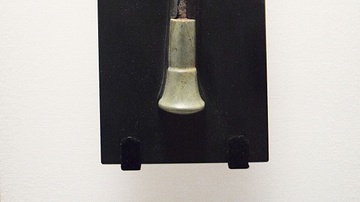
Image
Ancient Japanese Ceremonial Staff
This ceremonial object in the shape of a staff is made of Jasper. It is Japanese and it dates to the 4th century CE, during the Kofun period. (Tokyo National Museum)
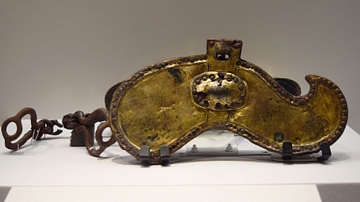
Image
Gilt-Bronze Horse Bit from Japan
This gilt-bronze horse bit was excavated from Kenzaki Otsuka, which is located in Japan's Gumna prefecture. It dates from the 6th century CE, during the Kofun period. (Tokyo National Museum)
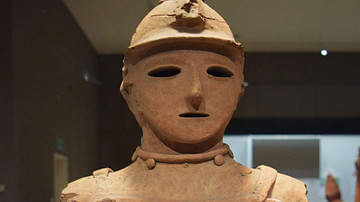
Image
Japanese Haniwa Warrior
This haniwa warrior in tanko armor is a terracotta tomb figurine. It comes from Kamichujo in Saitama prefecture, Japan. It dates from the 5th-6th century CE, during the Kofun period. Important cultural property. (Tokyo National Museum)

Image
Japanese Tablet with Sutra Inscriptions
This clay tablet with sutra inscriptions was excavated at Komachizuka Sutra Mound in Tanga, which is located in Mie prefecture, Japan. It dates to 1174 CE (Jo'an 4). Important cultural property. (Tokyo National Museum)

Image
Unusual Object from Japanese Kofun
This unusual object made of clay was excavated at Musota in Wakayama prefecture, Japan. It dates from the 5th century CE, during the Kofun period. It may have been used for ritualistic purposes. (Tokyo National Museum)
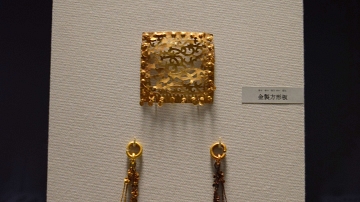
Image
Jewels from Niizawa Senzuka Tumulus
These golden jewels come from the Niizama Senzuka No. 126 Tumulus, which is located in Kawanishicho, Nara prefecture, Japan. They date the 5th century CE, during the Kofun period. (Tokyo National Museum)

Image
Ancient Japanese inkstone
This inkstone was excavated at Miyahara No. 1 Tumulus in Miyahara, Shizuoka prefecture, Japan. It dates from the 7th century CE, during the Kofun period. (Tokyo National Museum)

Image
Whale Bone Spade from Ancient Japan
This whale bone spade comes from Japan and dates from the Jomon period, between the 2nd-1st century BCE. (Tokyo National Museum)
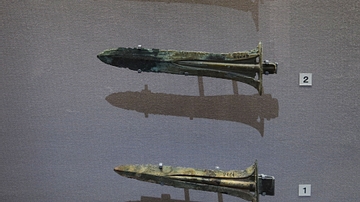
Image
Bronze Hallberds from Ancient Japan
These bronze Japanese hallberds date from the Yayoi period, between the 2nd-1st century BCE. (Tokyo National Museum)